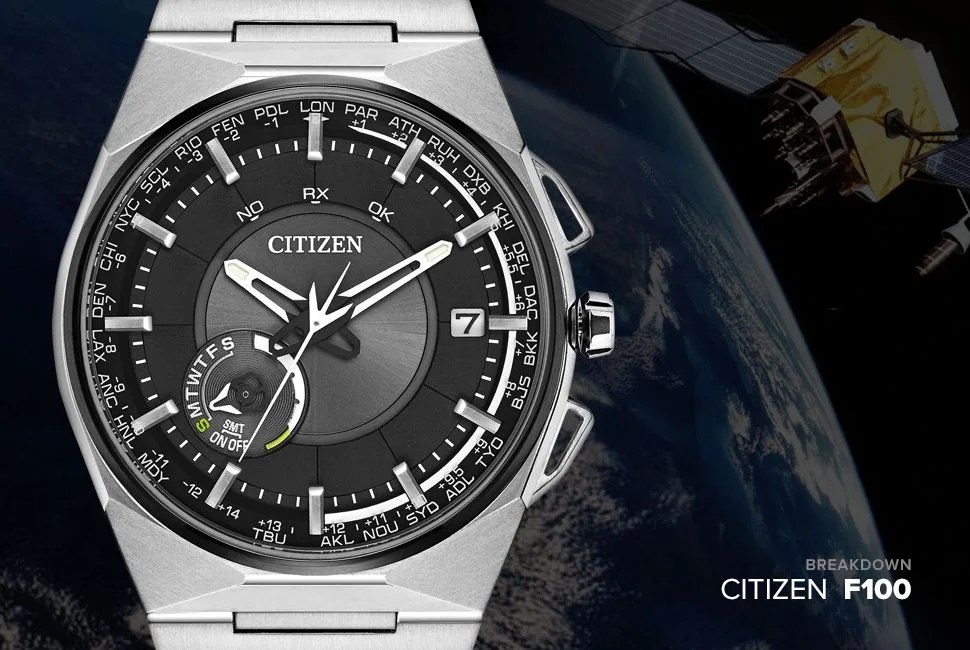There’s a space race going on in the watch world. In Japan, Seiko, Citizen and Casio are duking it out in the rarified atmosphere of satellite receiving watches. These are high-tech timepieces that use satellite signals to tell time as accurately as an atomic clock (satellite time signals originate from atomic clocks) and also detect local time automatically when you travel around the world. Seiko was the first to the party with its Astron, a handsome but busy watch that had even mechanical watch aficionados lining up to buy. Next to arrive, and seriously underdressed, was Casio’s Wave-ceptor, which has aesthetics that are more IT geek than jetsetter. Citizen introduced the latest offering, the F100 (~$2,000), at Baselworld 2014, and they’ve set the bar high.
MORE WATCH BREAKDOWNS: Ressence Type 3 | Richard Mille Bubba Watson RM-038 | De Bethune DB28
What is immediately most remarkable about the F100 is not its technological wizardry but its stunning design. Finally, a Japanese gadget watch that you can actually wear to the office without being asked for computer help! The sleek 45-millimeter titanium case and integrated bracelet make for an appealing low profile that almost resembles a Royal Oak. Citizen boasts that this is the slimmest satellite receiving watch on the market, a clear shot across the bows of its Japanese rivals. Aside from the case, the dial is refreshingly uncluttered; with only three hands, a date and a small subdial, the F100 is a real departure from some of Citizen’s other hi-tech watches, which had more gauges and hands than the instrument panel of a Dreamliner. That dial also hides a solar panel, which keeps the battery charged for months on end thanks to Citizen’s proven Eco-Drive technology.
Functionally, the F100 is impressive too. Citizen claims this watch has the fastest signal pickup of any satellite receiving watch — under three seconds. Timekeeping is predictably spot-on as long as you’re in view of the sky to receive a regular signal from satellites (if you’re not, you’ve got other problems). It’s also got a perpetual calendar, so there’s no need to fiddle with dates on short months or leap years. Citizen has also built in a power reserve gauge that tells you how much juice the battery has left and also shows how effective any given light source is for charging. Obviously, the most prominent feature of this watch is its ability to track 40 time zones, picking up your local time via satellite as you step off the plane in Dubai or Dhaka. When it’s released this summer, expect to see it on some wrists — combining whiz-bang technology and good looks tends to have that effect on sales.
